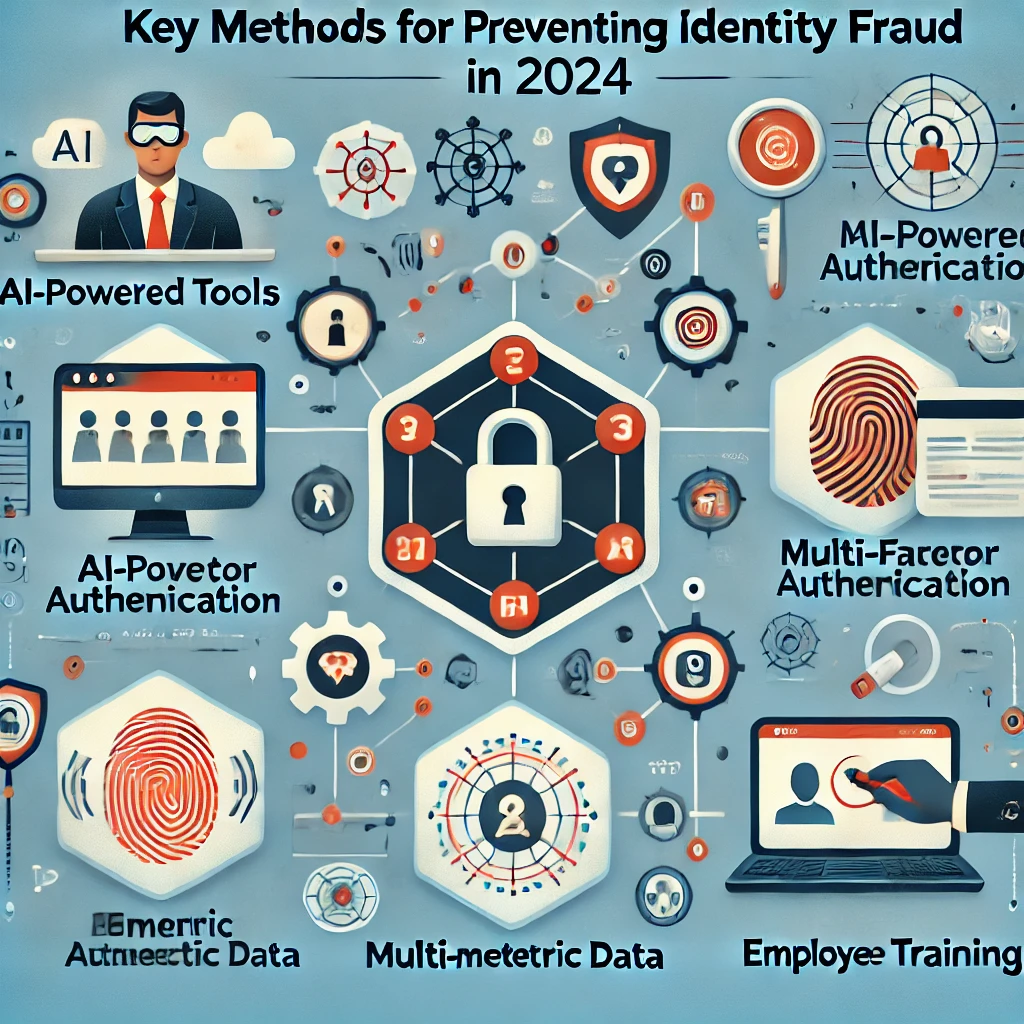Identity Fraud in 2024: How Businesses Can Protect Themselves
Discover the latest identity fraud trends in 2024 and learn how businesses can protect themselves using AI tools, multi-factor authentication, and employee training. Stay ahead of fraudsters with these essential strategies.
Introduction
Identity fraud continues to be a growing threat in 2024, affecting both individuals and businesses worldwide. As digital services become more prevalent, fraudsters are using increasingly sophisticated methods to steal personal data and commit fraud. For businesses, the impact of identity fraud can be devastating, leading to financial losses, damaged reputations, and regulatory penalties.
In this article, we’ll explore the latest trends in identity fraud, the risks for businesses, and effective strategies to protect against this growing threat.

1. What is Identity Fraud?
Identity fraud occurs when someone illegally uses another person’s personal information, such as their name, social security number, or credit card details, to commit fraud. In 2024, fraudsters are using advanced techniques like phishing, social engineering, and data breaches to access sensitive information.
For businesses, identity fraud often leads to fraudulent transactions, account takeovers, and significant financial losses. As digital platforms grow, businesses must remain vigilant and proactive in their fight against identity fraud.
Types of Identity Fraud
- Account Takeover Fraud: Fraudsters gain unauthorized access to a customer’s online account, often through stolen credentials or phishing schemes.
- Synthetic Identity Fraud: Fraudsters create fake identities using a combination of real and fake information, making detection more difficult.
- New Account Fraud: Fraudsters open new accounts using stolen or fake identities, typically for financial gain or other criminal activities.
2. Identity Fraud Trends in 2024
1. Rise of Synthetic Identity Fraud
In 2024, synthetic identity fraud is on the rise, where criminals combine real information with fabricated details to create entirely new identities. This type of fraud is difficult to detect, as the fake identities may appear legitimate in databases and credit checks.
2. Increasing Use of AI in Fraud Detection
Businesses are increasingly turning to artificial intelligence (AI) and machine learning to detect patterns of fraud. AI-powered tools can quickly identify unusual activity, flag potential threats, and stop fraudulent transactions in real-time. However, as AI detection becomes more advanced, so do the techniques fraudsters use to evade these systems.
3. Targeting of Small Businesses
While large companies have extensive security measures in place, fraudsters are now targeting small businesses, which often lack the resources to protect themselves adequately. Identity fraud against small businesses can lead to severe financial strain and even closure in some cases.
3. The Business Impact of Identity Fraud
For businesses, identity fraud presents serious risks. Beyond the immediate financial losses, companies face long-term damage to their reputation and potential legal penalties for failing to protect customer data. In an era where customer trust is paramount, businesses that fall victim to identity fraud may struggle to regain consumer confidence.
Moreover, regulatory bodies are increasingly holding businesses accountable for protecting customer data. Failing to comply with data protection regulations can result in heavy fines and legal action.
4. How Businesses Can Protect Themselves
1. Invest in Advanced Identity Verification Solutions
One of the most effective ways to prevent identity fraud is to implement robust identity verification solutions. These solutions use a combination of biometric data, AI, and machine learning to verify the identities of customers in real-time.
2. Multi-Factor Authentication (MFA)
Multi-factor authentication adds an extra layer of security, requiring users to verify their identity through multiple methods (e.g., a password and a code sent to their phone). MFA makes it more difficult for fraudsters to gain unauthorized access to customer accounts.
3. Regular Security Audits
Conducting regular security audits is essential for identifying vulnerabilities in your systems. These audits help ensure that your business is compliant with data protection regulations and that any weaknesses are addressed before fraudsters can exploit them.
4. Employee Training
Many identity fraud schemes rely on human error, such as phishing attacks that trick employees into sharing sensitive information. Regular training on cybersecurity best practices can help employees spot potential threats and avoid falling victim to fraudsters.
5. The Role of AI in Preventing Identity Fraud
Artificial intelligence is playing a crucial role in combating identity fraud. AI systems can analyze vast amounts of data and detect patterns that humans might miss. These systems can continuously learn and adapt to new threats, making them highly effective in preventing fraud.
Conclusion
In 2024, identity fraud remains a serious concern for businesses of all sizes. As fraudsters continue to evolve their tactics, businesses must stay one step ahead by investing in advanced security measures, regularly updating their defenses, and educating their employees.
By taking proactive steps to protect against identity fraud, businesses can safeguard their customers, maintain their reputation, and avoid costly regulatory penalties.
